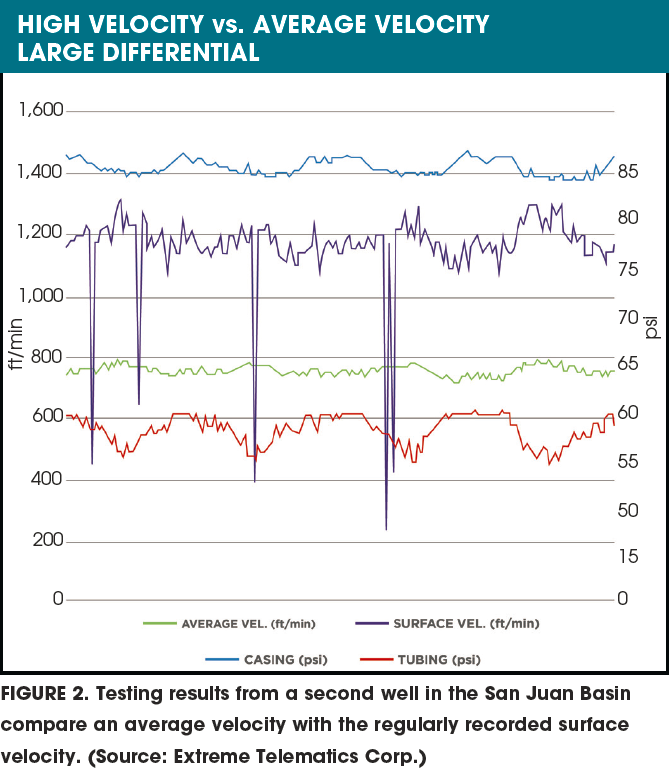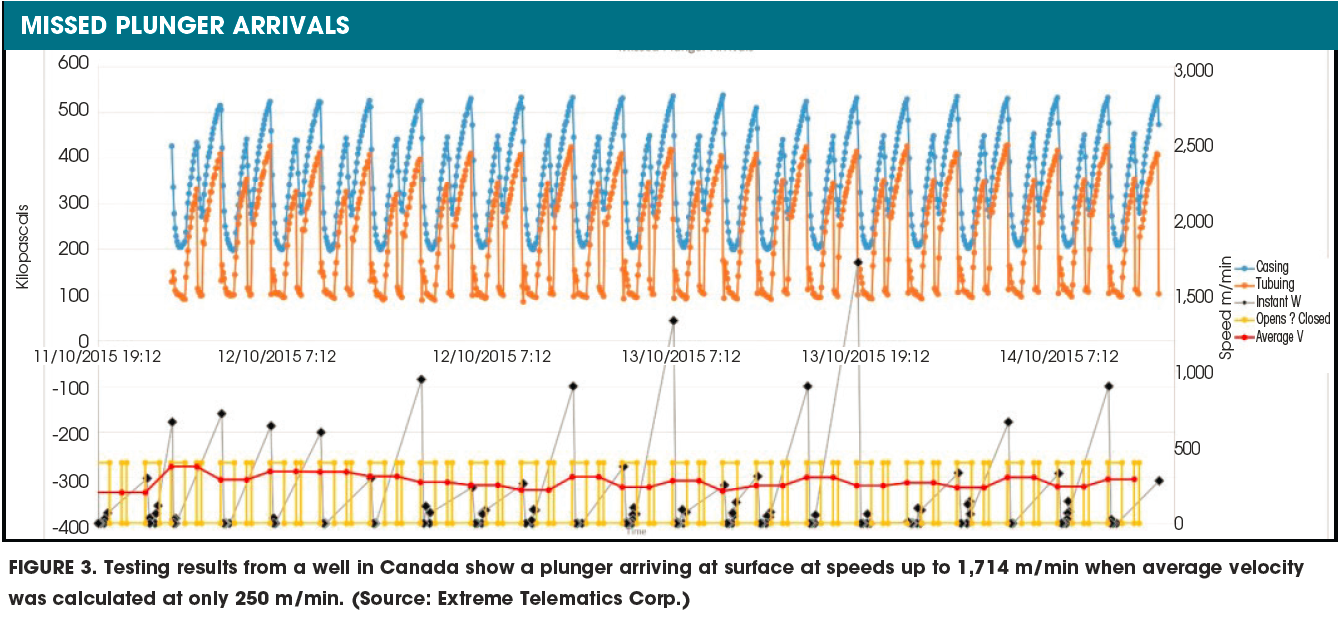The plunger lift industry has mostly been unregulated to date, leading to installation of equipment that is unreliable and unsafe on plunger lift wells across the continent. Wellhead surface equipment routinely takes heavy impacts from plungers, leading to failures that can result in spills or injuries.
Because of this there has been a push from industry to come up with a common set of standards that helps to provide some regulation for plunger lift equipment.
A new specification from the American Petroleum Institute (API), 11 PL, is emerging in plunger lift that covers plunger lift lubricators and related equipment. One of the main outputs of this new standard is the requirement for manufacturers to provide a kinetic energy (KE) rating for their lubricator and spring combinations. This rating helps to identify the magnitude of the impacts their equipment can take and allows the control system to compare real-time KE measurements. KE allows measurement, tracking and the ability to react to real impacts at surface instead of relying on velocity or overengineering of equipment to ensure safe and reliable operation of a plunger lift well.
The KE of an arriving plunger can be calculated using the mass and velocity of the plunger.
The mass of the plunger already is specified by plunger manufacturers, leaving operators to measure velocity at surface in real time to calculate the KE of each plunger arrival. Historically, operators have been content to rely on the average velocity of a plunger, which is calculated from the well depth and the time for the plunger to rise. But this is not accurate enough to be used for the KE calculation since it does not account for acceleration or deceleration and whether the plunger started at the bottom of the well or not.
Plunger surface velocity
The new Sasquatch plunger velocity sensor from Extreme Telematics Corp. (ETC) uses geomagnetic sensing technology to measure, store and relay the plunger arrival and surface velocity of the plunger. This gives an accurate velocity of the plunger in real time just before it strikes the anvil inside the lubricator at surface.
 Geomagnetic sensing technology was first implemented in the Cyclops plunger arrival sensor.
Geomagnetic sensing technology was first implemented in the Cyclops plunger arrival sensor.
Instead of using an electromagnetic coil to sense the plunger, the Cyclops uses a magnetometer or magnetic eye that monitors the magnetic field of the earth.
The movement of any ferrous object causes the magnetic field to change. These changes are compared to a threshold, which when exceeded is used to signal the arrival of the plunger.
This fundamental shift in plunger detection technology eliminated missed arrivals and false detections and led to the Cyclops becoming a recognized option for plunger arrival detection.
The increased accuracy of the plunger arrival using this technology allowed the creation of the Sasquatch. The Sasquatch uses multiple sensors and interprets the changes in the magnetic field to give a measured velocity of the plunger as it passes the sensor.
This velocity is logged internally and made available via Modbus to a connected control system. An external dry contact switch is closed, just as with the Cyclops, signaling that a new arrival was detected and a velocity value is available.
The algorithm to measure plunger surface velocity and its use resulted in a patent, U.S. 9,587,479 B2, “Velocity sensor for a plunger lift system,” granted in March.
Plunger surface velocity, KE
Using a real-time plunger control system such as the ALiEn2 Expert plunger lift controller, operators can measure the surface velocity and mass of the plunger to calculate the KE of each plunger arrival.
This can be compared to a user-defined threshold to determine if an operation should be halted.
In ETC controllers the user can specify both a hard hit and dangerous hit threshold. The controller watches for a specified number of consecutive hard hits and will automatically shut down operation of the plunger well to protect equipment.
If a plunger arrives that exceeds the dangerous hit threshold, the operation of the well will be stopped immediately to allow the operator to inspect the equipment before continuing.
 During testing of the Sasquatch with a well-known producer in the San Juan Basin, some startling results were recorded.
During testing of the Sasquatch with a well-known producer in the San Juan Basin, some startling results were recorded.
In one instance a well was routinely vented when the plunger did not arrive.
The long wait time for the arrival led to a low velocity of 121.9 m/ min (400 ft/min) being calculated. This meant that the 7.5-lb plunger appeared to be traveling with 7.02 Joules (J) of energy.
The Sasquatch was able to show that the plunger was in fact arriving at a much higher velocity of 617.2 m/min (2,025 ft/min) (Figure 1). The real KE was 180 J, or 25 times more energy than expected.
This was happening because the venting of the well removed the backpressure, causing the plunger to accelerate rapidly.
On another well in the same area the plunger was being optimized to an average velocity of 228.6 m/min (750 ft/ min). When examining the plunger surface velocity, ETC could see the 9-lb plunger was consistently arriving closer to 365.7 m/min (1,200 ft/min, Figure 2). This meant the actual KE of 76 J was substantially higher than the estimated 30 J. This may not sound like a lot, but over six months the spring was absorbing 200 kilojoules of energy. This will likely lead to premature spring wear, resulting in a failure.
In a third case in Canada an operator was reporting repetitive failures of its springs and plungers. Upon installing the Sasquatch, ETC found the plunger was arriving at a velocity of 1,714 m/min (5,623 ft/min) as opposed to the average calculated velocity of 250 m/ min (820 ft/min, Figure 3). At 10 lb this plunger was arriving with 1,853 J of energy and was able to collapse the spring in a single arrival.

What’s next?
With the advent of both plunger surface velocity and KE of plunger arrivals, a once stagnant industry is set to go through a revolution. Using KE for safety is simply the first step. The availability of these new operational parameters has sparked numerous discussions throughout the industry. As producers, service companies and technology providers analyze surface velocity data, new algorithms are being generated and tested to enhance production. Additionally, the KE of these arrivals is being used for predictive maintenance of plungers and wellhead equipment.
ETC is one technology provider that is working with several plunger well operators to refine a predictive maintenance model for spring wear. This model takes the cumulative KE of each plunger arrival and uses it to predict when a spring will fail. The goal of this technology is to reduce the number of physical inspections while reducing the amount of premature replacements. Currently, most operators replace their springs on a schedule, which causes issues when springs fail early but also causes them to replace springs that may last for longer periods of time. Many other operators simply run their springs to failure, leaving the opportunity for catastrophic failures that could be easily prevented.
Recommended Reading
WhiteHawk Badgers Response from PHX on Acquisition Offer
2024-11-12 - WhiteHawk Energy’s move follows months of unsuccessful attempts to engage PHX Mineral's leadership, including a previous stock-for-stock merger proposal in August 2023.
DT Midstream Closes $1.2B Midwest Pipeline Acquisition with ONEOK
2024-12-31 - DT Midstream acquired three pipelines with more than 3.7 Bcf/d of capacity that span approximately 1,300 miles across seven states.
Orion Acquires SCOOP/STACK Interests, Pursuing Permian Deals
2024-11-11 - Orion Diversified Holding Co. is pursuing negotiations with several oil companies in the Permian Basin to acquire oil and gas assets, the company’s CEO said.
Coterra Notches Year-End Permian Deal for $43MM
2024-12-31 - Coterra Energy will buy an additional 1,650 net royalty acres from Sandia Minerals LLC, the interests of which are owned by Franklin Mountain Royalty Investments, for $43 million.
Elk Range Acquires Permian, Eagle Ford Minerals and Royalties
2025-01-29 - Elk Range Royalties is purchasing the mineral and royalty interests of Newton Financial Corp., Concord Oil Co. and Mission Oil Co.
Comments
Add new comment
This conversation is moderated according to Hart Energy community rules. Please read the rules before joining the discussion. If you’re experiencing any technical problems, please contact our customer care team.





